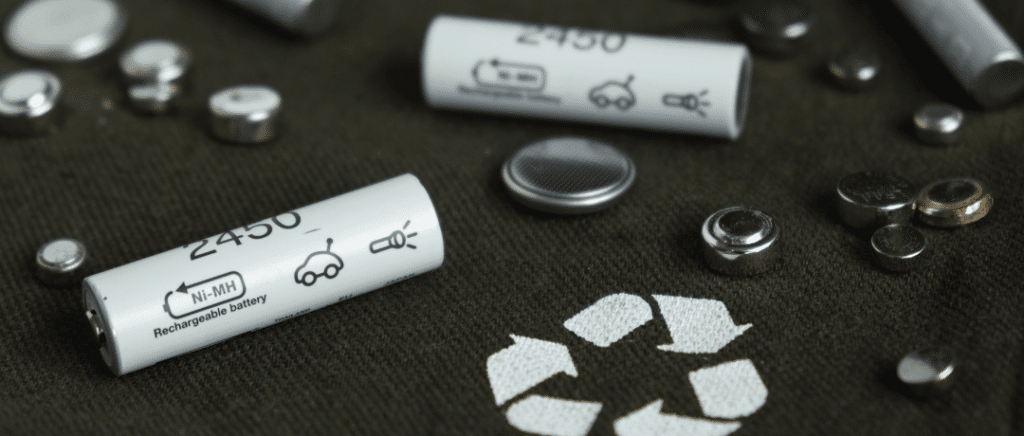Background: why set up a European plan to regulate the recycling of electric batteries?
As part of the " Fit for 55" climate package ,phasing out the use of fossil fuels in favor of electric mobility by 2035 requires a thorough review of the European automotive industry's manufacturing strategies. This also includes restricting sales of new combustion engine vehicles in the same year.
"Batteries are a key element in the decarbonization process and in the EU's transition to zero-emission modes of transport. At the same time, end-of-life batteries contain many valuable resources, and we need to be able to reuse these critical raw materials instead of relying on third countries for supplies. The new rules will promote the competitiveness of the European industry and ensure that new batteries are sustainable and contribute to the ecological transition".
Teresa Ribera, Spanish Minister for Ecological Transition.
In addition, demand for batteries is expected to increase, due to :
- digital economy,
- electric mobility,
- and renewable storage.
Similarly, the EU will need 18 times more lithium in 2030, and 5 times more cobalt in the same year. By 2050, demand will be 60 and 15 times higher respectively.
In short, the regulations adopted aim to :
- promote the circular economy,
- optimize the domestic battery market,
- reduce the ecological and social footprint of batteries,
- introduce new safety, durability and labeling standards to ensure fair competition.
The regulation adopted by the European Parliament and the Council will cover all batteries. This includes :
- the industrial batteries,
- the portable battery waste,
- the batteries for electric vehicles,
- the SLI batteries batteries (used mainly in vehicles and machinery),
- the batteries for light means of transport (electric bicycles, electric mopeds and electric scooters).
If you would like to find out more about this type of recycling for electric cars, our article "Electric car battery recycling"may be of interest to you.
What batteries are available in the European Union?
The European battery recycling plan is ambitious, but it is based on one fundamental element: the availability of batteries compatible with current recycling technologies. So what batteries are available in the European Union? What are their characteristics and advantages?
According to the European Parliament's research department, there are 4 types of battery in the European Union:
- Automotive batteries :
- They are specially designed to power electric vehiclesproviding the energy needed to start the engine and power the vehicle's electrical components.
- They are characterized by their their ability to withstand heavy loads and to maintain a stable voltage for reliable vehicle operation.
- Batteries for light vehicles :
- They are intended for light means of transport such as electric bicycles, electric mopeds and electric scooters.
- They are designed to provide an adequate power supply yet lightweight lightweight and compact for practical use on small vehicles.
- Industrial batteries :
- These are electrochemical devices used in various industrial environments to power power equipment and machines.
- They are generally designed to offer high reliabilityreliability long service life and ability to operate in difficult or extreme or extreme conditions.
- Portable batteries :
- These are compact power sources designed to power portable electronic devices such as cell phones, cameras, portable music players and toys.
- They are often lightsmall small in size and offer autonomy adapted to the needs of the devices they power.
Read also: Replacing an electric car battery: everything you need to know
By 2030, global demand for batteries could increase 14-fold, while the EU could absorb 17%.
This growth is mainly due to the rise of the digital economyand renewable energies and low-carbon low-carbon mobility. The rise of electric vehicles will position this field as a strategic market on a global scale.
What techniques are used to recycle these batteries?
Now that we understand the importance of battery recycling and the objectives of the European plan, it's time to look at the practical techniques used to give a second life to these essential components of electric mobility.
At present, recycling focuses mainly on two major techniques: pyrometallurgy and pyrolysis. pyrometallurgy andhydrometallurgy.
- Pyrometallurgy: Focusing on the exploitation of high temperatures, this method seeks to separate and recover individual materials. In simple terms, a battery is fed into a blast furnace, where specific temperatures are applied to obtain pure materials or alloys that can be used in new production processes.
- Hydrometallurgy: This more recent but fast-growing method involves separating the battery's raw materials using chemical solvents. Operating at low temperatures, it requires less energy, making it more efficient.
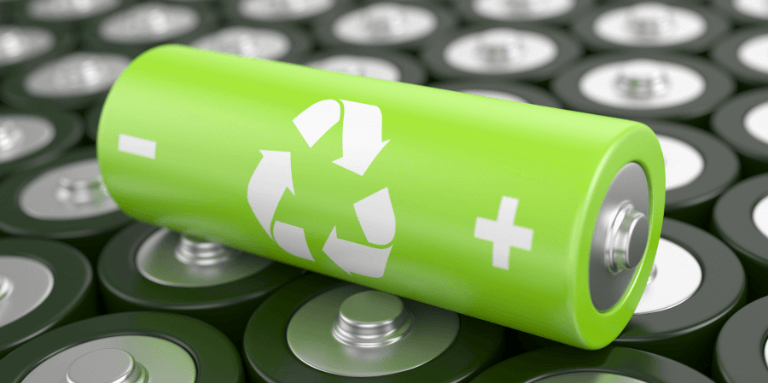
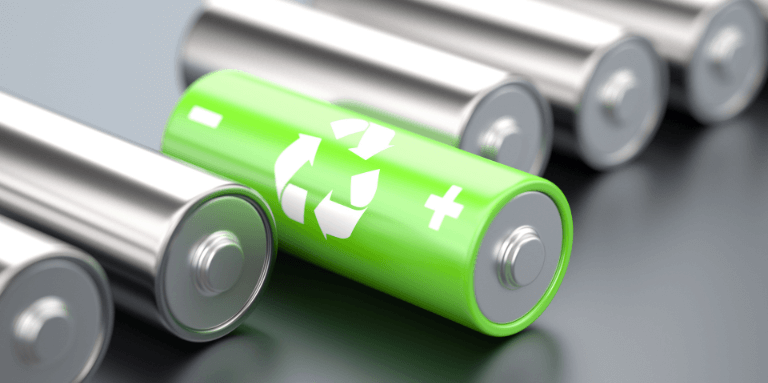
The European electric vehicle battery recycling plan: what is it for?
As previously stated, the European Union has put in place an ambitious plan for the recycling of electric vehicle batteries. But how do we go about it? What resources have been put in place to meet this challenge? What are the targets?
Focus on the circular economy
Recent regulations aim to promote a circular economy by regulating the life cycle of batteries. They establish end-of-life criteria, including :
- objectives for recycling materials,
- extend producer responsibility,
- collection objectives and responsibilities.
For electric vehicles, this regulation now imposes minimum recycling thresholds (which also apply to industrial and SLI batteries). These thresholds are initially set at :
- 6% for nickel,
- 6% for lithium,
- 16% for cobalt,
- 85% for lead.
In addition, batteries must be supplied with documentation detailing their recycled content.
Worth knowing The recycling target is 80% for nickel-cadmium batteries and 50% for other types of battery by the end of 2025.
Reducing GHG emissions
Recent regulations require battery manufacturers to exercise due diligence to prevent human rights abuses. prevent human rights abuses and and ensure greater ethics in battery manufacturing.
To put this in context, battery production relies heavily on importedimports of raw materials such as cobalt, lithium, nickel and manganese, resulting in significant environmental and social repercussions.
As a result, all companies selling batteries in the EU (with the exception of SMEs) must adopt and apply this comprehensive due diligence policy.
To ensure greater transparency, batteries with a capacity of over 2 kWh will have to display a label highlighting their carbon footprint. They will also have to comply with environmental and social criteria concerning :
- the treatment,
- the trade,
- and thesupply of raw materials, chemicals and secondary raw materials.
In addition, battery manufacturers are required to recover at least 63% of end-of-life battery materials by 2027, rising to 73% by the end of 2030. In the case of lithium-ion batteries, the targets set indicate that recovery must reach 50% by 2027 and 80% by the end of 2030.
A level playing field for all manufacturers
To improve the functioning of the internal battery market while ensuring fairer competition fairer competition through reinforced standards standards safetysafety sustainability andlabelingnew rules have been introduced.
To achieve this objective, performance, sustainability and safety criteria will be put in place, along with strict restrictions on hazardous substances such as :
- lead,
- mercury,
- cadmium,
- and mandatory information on the carbon footprint of batteries.
In addition, the regulation imposes requirements forlabeling andinformationrequirements, notably concerning battery components and recycled content, as well as an electronic "battery passport" and QR code.
Also read : The electric car battery passport: what is it for?
To give member states and industry enough time to prepare, the labeling requirements will be in force by 2026, while the QR code will be in force by 2027.
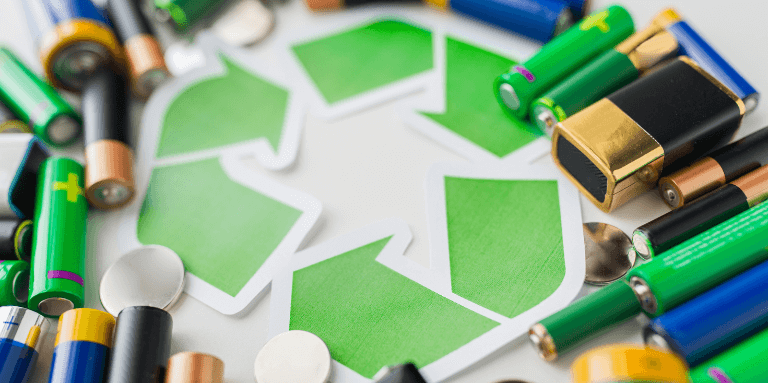
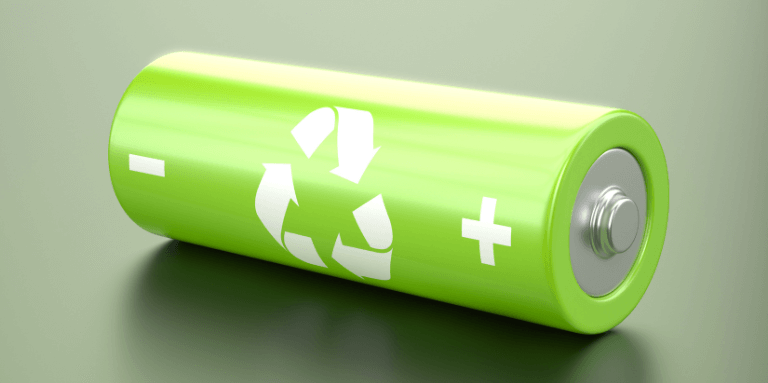
What are the limits of this European plan?
While Europe's battery recycling plan is ambitious and commendable, it is not without its critics. A number of grey areas remain, which could hamper its long-term effectiveness.
The cost of raw materials
Firstly, the European Court points out that rising production costs such as energy and raw materials could make batteries and therefore electric vehicles unaffordable for many owners (despite the numerous financial assistance for electric cars).
The cost of raw materials has risen significantly, with an increase in the price of nickel. nickel price by more than 70 % and lithium by 870% in the space of two years. Given that a battery battery represents 40% of the total price of a vehicleit is unlikely that the purchase cost of this type of vehicle will decrease.
As a result, this could potentially lead to a lower demand for electric vehicles and a economic interest in investing of investment in production facilities.
Increased dependence on competitors
It is important to remember that the context of international competition is a demanding one.
In fact, China currently has a dominant 76% share of global battery production, while the EU has 7%.
But that's not all: the EU is 78% dependent on imports for 5 raw materials (nickel, cobalt, manganese, lithium, natural graphite), mainly from a few countries:
- Australia: 87% of raw lithium
- Democratic Republic of the Congo : 68% of cobalt
- China: 40% of natural graphite
What's more, the EU has yet to establish free-trade agreements with these major world producers, which may jeopardize supplies due to geopolitical risks.
Furthermore, the EU is experiencing difficulties in extracting minerals from its own subsoil. Although lithium is present in Portugal and France, it takes an average of 12 to 16 years from discovery to production.
The attractiveness of the US plan versus the EU plan
The EU must address another challenge identified by the European Court: its lack of attractiveness to investors.
At the expense of the EU, battery producers may be attracted by the USA and its IRA. The IRA is a massive subsidy program known as the Inflation Reduction Act, which encourages companies to set up battery production plants.
This country directly supports battery production and the purchase of electric vehicles manufactured locally using American components. In all, Washington plans to spend nearly $16 billion, compared with $7.7 billion for Europe.
Conclusion
The European battery recycling plan is an important step in the right direction. It is a necessary initiative to guarantee the sustainability of the electrical sector and meet growing environmental demands.
However, it is important to note that this plan is not without its challenges. Major efforts will be required to improve the profitability of recycling, develop the necessary infrastructure and skills, and simplify regulations.
What's more, the success of this plan will depend on the collaboration of all players: governments, industry, researchers and citizens alike. It is by joining forces that we can meet the challenge of battery recycling and build a more sustainable future for electric mobility.
Take a look at our other articles to find out more about electromobility, a fast-growing sector.
For allcharging station installation or electric car installation, our Beev experts are here to support you in your eco-friendly initiative.
